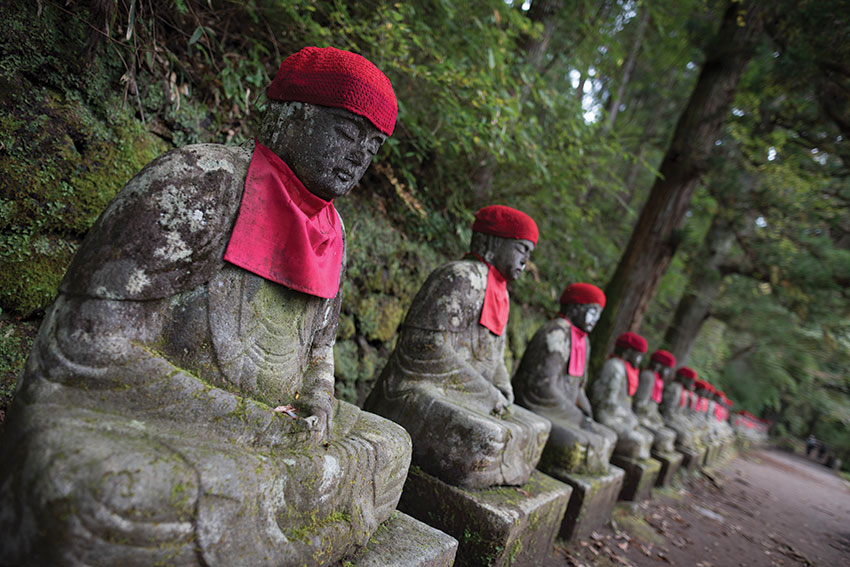Beyond the bright lights of Tokyo, Japan offers a feast of cultural, natural and gastronomic wonders to enliven the senses, such as Ise-Shima National Park in the Mie Prefecture and the 1,300-year-old Sensoji Temple in Asakusa

Tokyo has by no means the monopoly on Japan’s multi-faceted attractions. Away from the capital’s vast urban array of glass, concrete and luminous nights, discerning and mildly adventurous visitors can also seek out smaller towns and islands where traditional ways still prevail, and choose from no less than 32 national parks, eight of which have been selected by the Environment Ministry for a pilot project aimed at attracting more visitors in search of clear air and breathtaking scenery.
Probably the most famous of the selected eight is the Ise-Shima National Park in the Mie Prefecture, where the Isa shrine is located and the G7 took place in May this year. The other seven locations, all equally enticing, are the Nikko National Park which straddles the Fukushima, Tochigi and Gunma prefectures; the Daisetsuzan and Akan National Parks in Hokkaido; the Kirishima-Kinkowan and Aso-Kuju National Parks in Kyushu; the Towada-Hachimantai National Park in northern Tohoku; and the Keramashoto (Kerema Islands) National Park in the Okinawa prefecture. To entice trippers to all of these exhilarating areas and encourage private investment in hotels and other facilities the Ministry has announced an improvement of infrastructure and services at the selected locations.
Encouragement has also been expressed by a variety of key figures in tourism, all eager to see the country’s appeal extend beyond solely visiting big cities and going shopping (favorite pastimes of the dominant–and generously spending–Chinese holidaymakers’ contingent who account for 25-30% of the current tourist market).

Lake Chuzenji, Tochigi Prefecture
“The key is not to promote Japan as a whole–we have to think specifically about these local cultures and promote each region separately,” says President and CEO of Solare Hotels and Resorts, Tadashi Inoue.
He’s supported in this laudable objective by Grand Hyatt Tokyo’s Steve Dewire: “Repeat guests to this country have been increasing so I believe the style of travel will shift from visiting major tourism sites and areas such as Tokyo, Kyoto and Hakone to also including a variety of regions where tourists can learn about and be exposed to Japan’s everyday lifestyle and culture...we need to start highlighting other attractions which may not yet be known to people around the world.”
Akira Segawa, President of Fujita Kanko feels that some degree of local self-promotion is also required: “We need each region to be able to craft a message to communicate what they are about, including activities, sites or experiences that can promote that region. Then they need to tailor the message targeting each overseas market to effectively attract them.”
It’s not hard to reach these enticing rural areas. Akira Hirabayachi, President of H.I.S. travel agency points out that getting out and about is easy, as almost every corner of the country is readily accessible by the fast and efficient bullet train service. The language barrier is also becoming less and less of a problem as the company looks into ways of increasing the number of bilingual guides, boosting multilingual communication, improving transportation networks that link local airports with tourist spots, and addressing the shortage of charted buses and accommodation. Overall, an increase of visitors to rural regions is good news for everyone. “Local economies in Japan really benefit from tourism now as the population declines and not much revenue is being circulated,” he observes.
Yoshizumi Nezu, the president of Tobu Railway Co., the company which launched the country’s very first railway 119 years ago and operates the Tokyo Skytree tower, is committed to spreading wider information about services to these outlying areas, which cover the whole hinterland and adjoining islands and take in a host of historic shrines such as the 1,300-year-old Sensoji Temple in Asakusa and several Buddhist temples in Nikko.

Yoshizumi Nezu, President of Tobu Railway Co.
Mr. Nezu is aware that if you want to increase tourism there the authorities have to promote the assets. “You have nature, beautiful sights, historic places and museums. We need to position these things in the hearts and minds of tourists.”
There’s also a strong need to appeal to the senses. “Food is a big one so we focus on that. We see the beautiful sites as great draws but the food as an anchor. We want to make sure that wherever people go in these areas they are accompanied by good food,” he adds.
“When we look at our company, which only has just over 100 years of history, in comparison it makes us think how small we are and what a small impact we’ve had. We feel we have a duty to bring the tourists to these attractions and to protect these routes. We feel we have a duty as well to communicate about these attractions to the visitors to Japan.”
0 COMMENTS